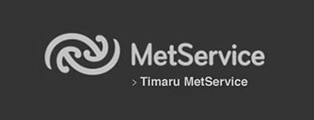Good Irrigation Practice
The overview of the good irrigation practices below is a reminder that Opuha Water wants to ensure that the water resource is used efficiently by the farmers who obtain water from within the scheme and to allow the fair, equitable and efficient allocation of water to all water users.
Opuha Water and all its shareholders are members of Irrigation New Zealand (INZ). INZ provides regular communication through their quarterly magazine, “Drip Feed” email update and via the INZ website http://www.irrigationnz.co.nz. Irrigators are encouraged to access this information which includes a number of useful reports, guidelines and Codes of Practice of irrigation system design and operation.
- Pre-season checks. While OWL will carry out pre-season checks on the race delivery system prior to commencement of operations, individual irrigators should also carry out their own checks of the waterways adjacent to their property as well as their on-farm equipment. Please advise any potential issues regarding scheme races or scheme equipment so that the raceman can attend to them prior to water being released. OWL can provide a handy equipment checklist for centre pivot and linear move irrigators. Contact the office for a copy.
- Operations during the season. Irrigators are encouraged to note and advise of any evident or potential operational problems with the irrigation schemes so that OWL attend to the problems promptly. Irrigators should also be making regular checks of their own on-farm equipment, including pumps and intake screens, to ensure any potential issues can be addressed before they cause problems that will affect water delivery.
- All those using spray irrigators have an obligation to ensure that irrigation water does not fall on roads or cause a nuisance to adjacent properties. While there will naturally be some spray drift occurring, particularly from the prevailing wind, farmers are required to carefully plan irrigator start & stop points and programme pivot end guns to switch off in proximity to roads.
- Once flood irrigation water is released and delivered to a property, the farmer is to ensure that no spillage occurs onto neighbouring properties and/or roads. In the event that spillage happens, the farmer is required to notify the raceman and remedy any faults in their delivery system.
- It is important that all water to be used is ordered with the required notice periods and similarly cancelled when it is no longer required. Opuha Water Ltd is required to maintain river flows and provide records of water usage to Environment Canterbury daily for compliance.
- Users who choose to disregard the rules by either tampering with set gates or taking water without ordering through the appropriate channels are in breach of the water supply deeds. There will be penalties applied to any users who choose to flaunt the rules.
External Resources Dairy NZ – DIY Irrigation Evaluation Carrying out an irrigation evaluation is a good way to know how well a system is performing and where the opportunities are to improve. An evaluation requires knowing what the system is specified or designed to do, and checking it is performing to that level. It is about understanding the limiting factors of the system and taking action to fix it, leading to better efficiency, more production and more profit. This guide will help record performance values for your system, taking you through the measurements and calculations. These can be compared with the system’s design specifications to see if it is performing as it should. The six-step process uses the same principles that irrigation evaluation professionals use. It should be done at least once each year to ensure that the system is in top shape.
![]() Download here – DIY Irrigation Evaluation Guide
Download here – DIY Irrigation Evaluation Guide
Dairy NZ – Guide to Good Irrigation The Dairy NZ Guide to Good Irrigation – parts 1 and 2 were developed to help dairy farmers fine-tune their farm’s irrigation and help with daily operation. Part 1 is for farm staff and managers operating irrigation systems on a daily basis. It deals with how soil and plant types, climate, various system capabilities, timing and volume of water application influence the farm’s irrigation needs. Part 2 is about making irrigation managers aware of their responsibilities as irrigators, including conditions of water supply, protecting water quality, efficient water use, teaching staff good irrigation practices and improving the system’s performance. It also covers soil moisture monitoring, upgrading an old system and considerations when designing and installing a new system.
![]() Download here – Guide to Good Irrigation – Part 1
Download here – Guide to Good Irrigation – Part 1
![]() Download here – Guide to Good Irrigation – Part 2
Download here – Guide to Good Irrigation – Part 2



